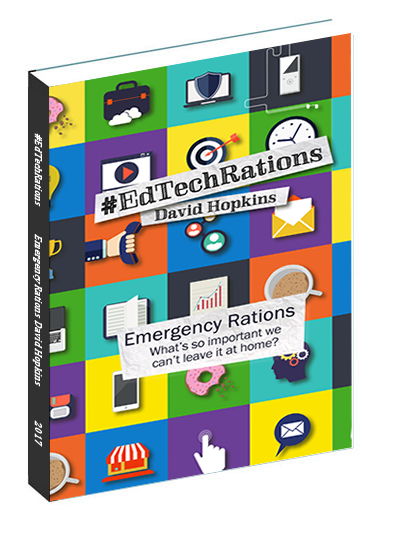CMALT: (1B) Operational Issues
“Candidates should demonstrate both their understanding and use of learning technology. “Use” might include the use of technology to enhance learning and teaching, the development, adaption or deployment of technology to support teaching, training or learning.”
1B. Technical knowledge and ability in the use of learning technology
“You should show that you have used a range of learning technologies. These might include web pages, Virtual Learning Environments, Computer-Aided Assessment, blogs, wikis, mobile technology, e-books, programming languages and so on. Evidence might include copies of certificates (originals not needed) from relevant training courses, screenshots of your work, a note from academic or support staff who have worked with you or, if appropriate, confirmation that the work is your own from your line manager.”
Using technology has never been difficult to me: I was bought a ZX81 for my 9th birthday. I wrote games and silly little animations and wasted far too many sunny days being indoors instead of outside. From my early exposure to these innovative personal computers (ZX81 and ZX Spectrum) I learned the value of coding and what can be achieved: not that I was particularly any good at it. I enjoyed the satisfaction of successfully entering a game code from one of the many early computing magazines and eventually started to try my own programming. I never got very far but was proficient enough to understand how to structure the code, the accuracy of the code determines whether it’ll work or not, and that to develop games like Elite or Jet Set Willy (popular games in the early 1980’s) took a great deal more talent than I had.
Fast forward 25+ years and I now have the maturity to know what’s good for me and what isn’t, but I also have a better understanding of what I can do, what I can really do, with technology available.
As the Learning Technologist responsible for the fully-online programme (BIBM) I utilised all sorts of technology (lecture capture, discussion boards, skype, etc.) to help non-technical students understand the systems they were about to use, and how they could use them to their advantage when studying online. Induction materials were introduced to the students by the Programme Coordinator, by way of a YouTube video (see Supporting Evidence item 1), and followed up by Induction activities (for examples see Supporting Evidence item 2). This work was the basis for a poster presentation to the Bournemouth University Enhancing Education Conference in 2011 called “Building Educational Confidence and Affinity Through Online Induction Activities” (see Supporting Evidence item 3).
The kind of technology I have employed has always been carefully planned in order to maximise its effectiveness (and simplicity) for the students and to maximise its accessibility: I used YouTube in the example above as it is a robust and popular system able to deliver the video in a way a video loaded to the VLE could not. I continue to use Camtasia and Captivate for video walk-through guides that introduce the students to the tools or systems they will use for online activities (wikis, blogs, discussion boards, online assignment submission, etc: see Supporting Evidence item 4) as this is easy to record the action on the screen and annotate with either captions and/or audio content.
I have always said that the use of technology should be ‘appropriate’ and ‘considered’; used when it has something to add rather than used because you simply can. I do not use a tool because I can or because I want to, I use it because it is capable of enhancing the activity or the learning process, or making an action simpler. Blackboard, for example, can be used in many different ways, to support many different types of ‘resources’: from a simple document repository to fully engaging and interactive quizzes, discussions, or group work, Blackboard can be used to facilitate and support the student. But ‘how’ I use it is up to me, and this is where skill, knowledge, and a ‘considered’ approach to learning technology is applied effectively.
Supporting Evidence:
- YouTube: Induction Materials – Introduction to online BIBM programme
- Induction Activities: ‘Induction’ tag
- Conference Poster: “Building Educational Confidence and Affinity Through Online Induction Activities”
- Video walkthrough – VLE Community and Induction (link broken)
Portfolio pages:
- 1A. An understanding of the constraints and benefits of different technology
- 1B. Technical knowledge and ability in the use of learning technology
- 1C. Supporting the deployment of learning technologies
- 2A. An understanding of teaching, learning and/or assessment processes
- 2B. An understanding of your target learners
- 3A. Wider context
- 4A. Communications
- 5. Specialism
- 6. Future plans
- 2017: Review


















